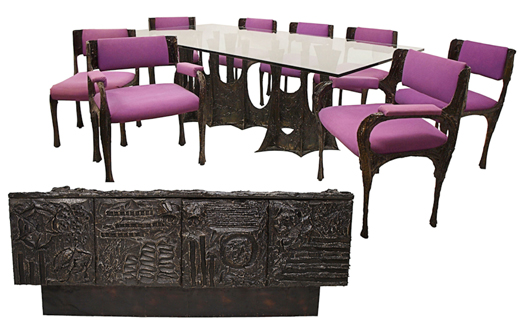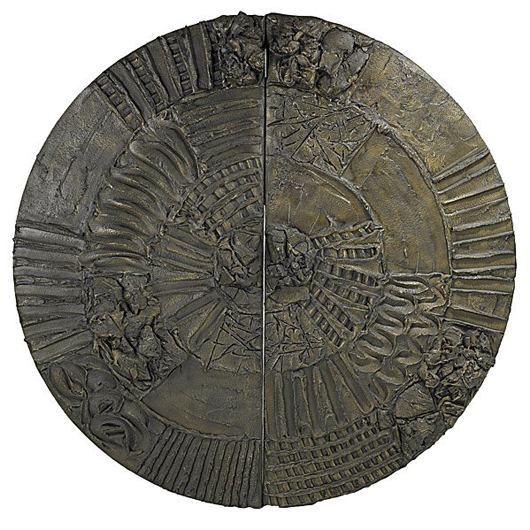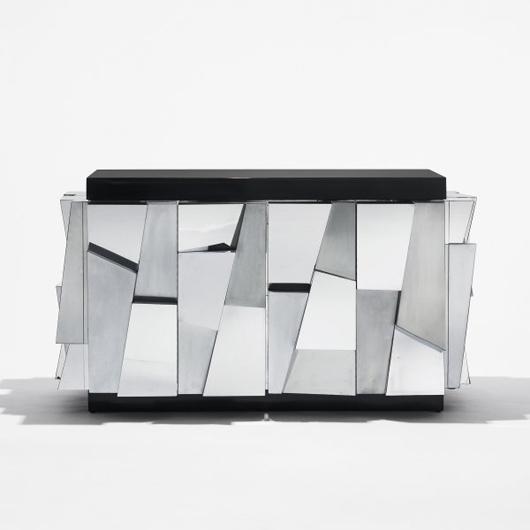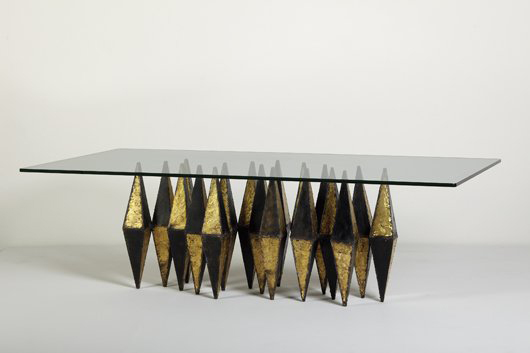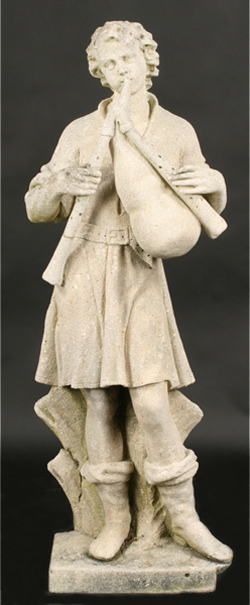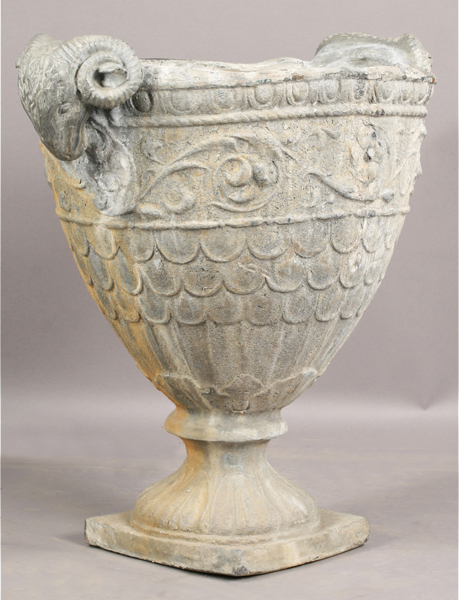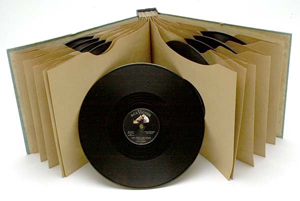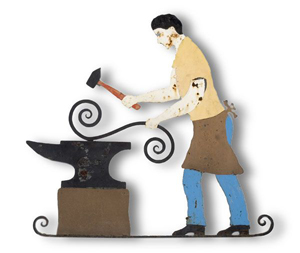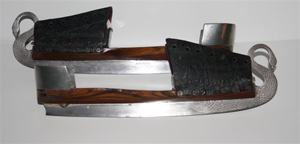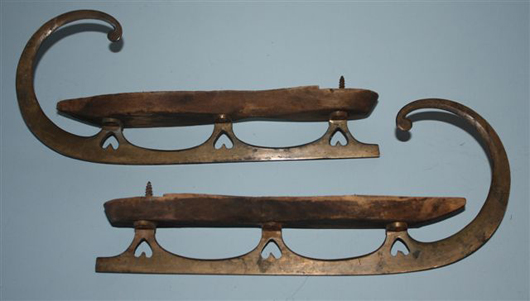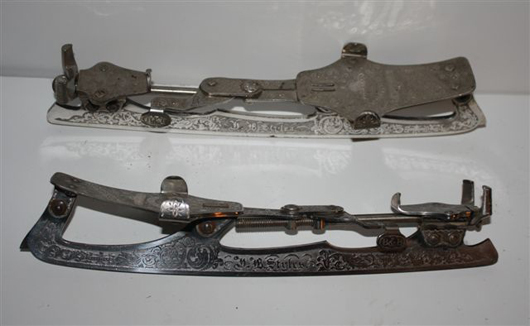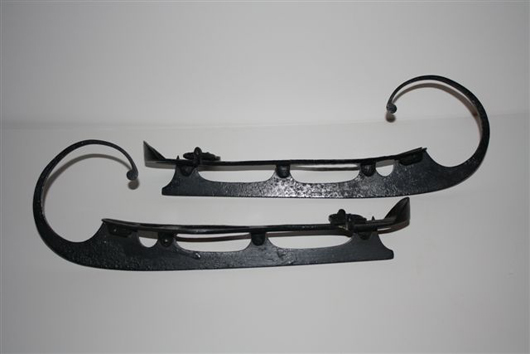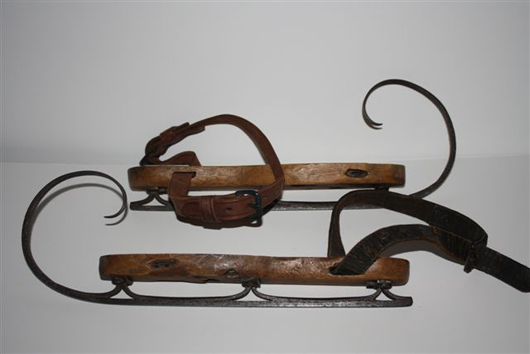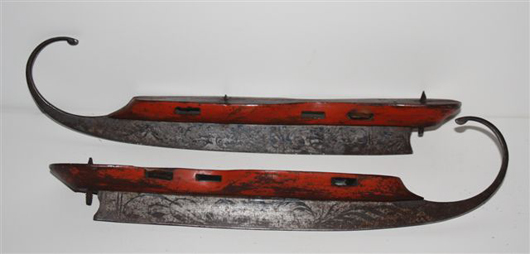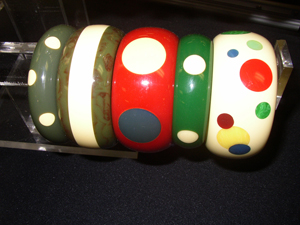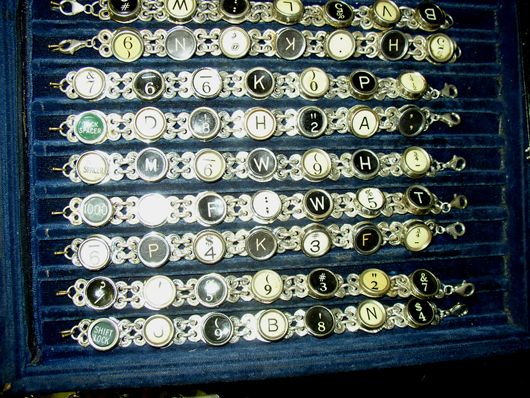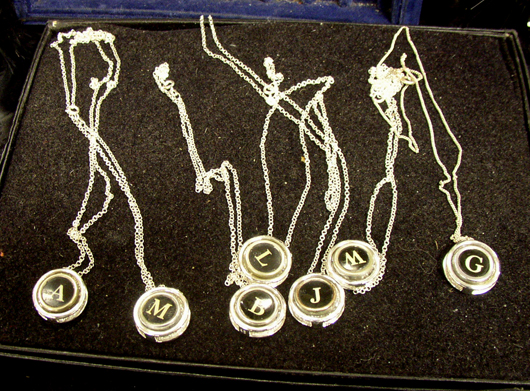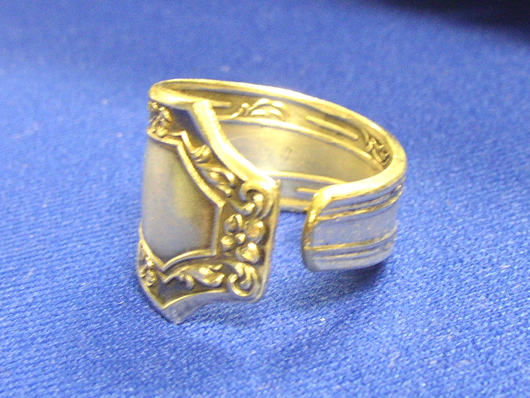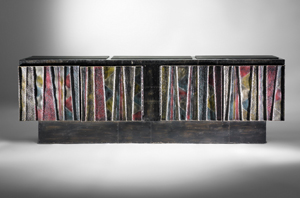
In 2000, the year the auction house Wright debuted, a 1974 four-door welded cabinet with slate top by artist and designer Paul Evans (American, 1931-1987) went on the block.
It failed to sell, although a small hanging stainless steel cupboard by Evans managed to eke out $489, including buyer’s premium.
Eight years later, an almost identical four-door cabinet came up at Wright, a Chicago-based specialist in modern and contemporary design. This time around, there were plenty of admirers competing for Evans’ futuristic fusion of sculpture and furniture. The winner paid $72,000.
“You can walk into a room that has one of his great, welded cabinets and see something unique, a very unselfconscious artistic style,” said owner Richard Wright. “Interior decorators understand his aesthetic and how to use his extreme pieces in a way that is tasteful rather than threatening.”
Evans designed monumental wood furniture with sculptured aluminum, bronze and copper decoration that ran counter to the sleek simplicity of the 1950s and 1960s. An artist and entrepreneur, he was intent on making handmade furniture, as well as a profit.
Mastering sculpture and jewelry design at the School for American Crafters in Rochester, N.Y., and Cranbrook Academy of Art in Bloomfield Hills, Mich., Evans was artist in residence as a silversmith at the working history museum of Sturbridge Village near Springfield, Mass.
He visited the artistic community of New Hope, Pa., in his native Bucks County, frequenting a shop owned by artisan Phillip Lloyd Powell, who would become his mentor. Powell allowed Evans to display several pieces in his showroom and in 1956 Evans decided to make New Hope his home.
In 1964, he became the designer for Directional, a furniture manufacturer that introduced such innovations as a buffet-style cabinet that is reminiscent of a fractured iceberg, veneered with large facets of chrome-plated steel. His Argente series is a groovy union of welded aluminum with applied ink. The Sculpted Bronze line is a study in industrial art; the Cityscape collection is typified by geometric metallic veneered panels.
“Evans had several distinctive styles and it can be difficult to compare,” said Lisanne Dickson, director of modern design at Treadway Toomey Galleries of Cincinnati and Oak Park, Ill.. “There is no perfect science to it.”
The man was as complex as his designs. A heavy drinker, Evans was impetuous, exasperating and charming. He posed with a welding torch for a Life magazine photographer, but in reality he rarely touched tools, focusing on design.
“He had a huge personality,” Wright said.
For years, demand for Evans’ work was overshadowed by his New Hope contemporary George Nakashima, whose naturalist wood pieces soared in price in the 1990s.
Soon, Evans will be getting his due as an artist in the community he called home. In 2012, he will be the subject of a retrospective exhibit at the James A. Michener Museum in nearby Doylestown, Pa.
“The materials, the methods Evans used were so different,” said curator Connie Kimmerly, who consulted with craftsman Dorsey Reading, who worked with Evans and collected his pieces. “His use of the new technology that was available in the 1950s made him a real force.”
In addition to various metals and stone, Evans embraced epoxy resin, which was applied to the surface of furniture and then sculpted freeform. He sketched the designs and handed them off to artisans, who assembled and finished the pieces for hip, latter mid-century buyers.
After a swift run up in the mid-2000s, prices for Evans cooled along with the economy. “It was like a huge wave,” Dickson said. “Prices built up rapidly, then took a hard hit with the recession.”
Recently, there have been significant signs of an uptick in value. On April 18, a 10-piece sculpted bronze dining room suite zoomed to $59,225, including 15-percent buyer’s premium, at Austin Auction Gallery in Austin, Texas. Since then, there has been a flurry of interest from prospective buyers and consignors.
“I just got an e-mail from a guy in Pennsylvania who is wondering if the person who bought the dining room suite might be interested in his coffee table,” said Austin Auction Gallery associate Chris Featherston.There is other evidence the market is perking up. A bronze disc-shaped bar cabinet more than doubled expectations, garnering $13,000 at Rago Arts and Auction Center in Lambertville, N.J., on April 25, according to sales information from LiveAuctioneers.
Demand for the top pieces remains hot, fanned by passionate collectors and committed dealers, most notably Todd Merrill Antiques of New York, an ardent champion of Evans’ industrial aesthetic. On April 28 a table with glass top and gilded steel base made the equivalent of $71,051 at a sale at Phillips de Pury & Co.
Still, Evans’ vision as an artist and designer has not aged evenly. His sculpted epoxy resin is prone to chips and is difficult to restore. The panels on the Cityscape series cabinets tend to lift.
That said, many of his massive metal cabinets and special occasion tables are in excellent condition. Featherston noted that Directional began making his furniture less than 50 years ago—and virtually all the pieces, signed and dated by Evans, went to well-heeled patrons.
“The dining room suite we sold cost $20,000 in 1970,” he said. “The original buyers were not the kind of people who let their kids beat up on the furniture.”
Richard Wright, who has handled more than 200 Evans lots, said the designer strikes a sweet balance between supply and demand. He died at 55, yet boasted a prodigious output, thanks to a dedicated staff. By contrast, his mentor Powell preferred to work alone and produced barely 1,000 pieces before his death in 2008 at 88.
“It’s a very well made, cohesive body of work,” he said. “Evans made enough furniture to feed a following, but not so much that the market would ever be flooded with it.”
ADDITIONAL LOTS OF NOTE
